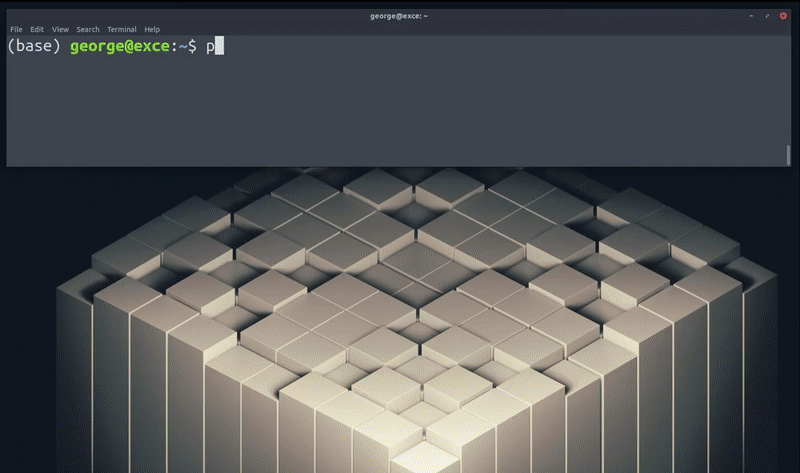<p align="center">
<img src="https://raw.githubusercontent.com/georgegach/flowiz/master/demo/githubassets/flowiz-logo.png" width=400 alt='flowiz' style="margin:50px;max-width:400px">
<p>
<p align="center"><a href="https://www.codacy.com/app/georgegach/flowiz?utm_source=github.com&utm_medium=referral&utm_content=georgegach/flowiz&utm_campaign=Badge_Grade"><img src="https://api.codacy.com/project/badge/Grade/676e7f10fc8a46c28ce69409a587828c" alt="Codacy Badge" /></a>
<a href="https://github.com/georgegach/flowiz/blob/master/LICENSE"><img src="https://img.shields.io/pypi/l/flowiz.svg" alt="PyPI - License" /></a>
<a href="https://pypi.org/project/flowiz/"><img src="https://img.shields.io/pypi/v/flowiz.svg" alt="PyPI" /></a>
<a href="https://pypistats.org/search/flowiz"><img src="https://img.shields.io/pypi/dm/flowiz.svg" alt="PyPI - Downloads" /></a>
</p>
<p align="center">
<a href="https://mybinder.org/v2/gh/georgegach/flowiz/master?filepath=demo%2Ftest.ipynb"><img src="https://img.shields.io/static/v1.svg?label=launch&message=notebook&color=F37626&style=for-the-badge&logo=jupyter" alt="Launch Jupyter" /></a></p>
</p>
<h1></h1>
Converts Optical Flow `.flo` files to images `.png` and optionally compiles them to a video `.mp4` via ffmpeg
- [Installation](#installation)
- [Usage](#usage)
- [Command line usage](#command-line-usage)
- [Python usage](#python-usage)
- [GUI usage](#gui-usage)
- [Help](#help)
- [Acknowledgements](#acknowledgements)
- [FAQ](#faq)
- [To-Do](#to-do)
## Installation
### PyPI
Easiest option to install `flowiz` is to grab the latest package from PyPI repo
```bash
pip install flowiz -U
```
### pip + Github
Alternatively you may install the package directly from github repo
```bash
pip install git+https://github.com/georgegach/flowiz/
```
### Build yourself
Or you can run `setup.py` to build it yourself locally
```bash
git clone https://github.com/georgegach/flowiz.git
cd flowiz
python setup.py install --user
```
Make sure you have requirements installed along with an `ffmpeg` to compile a video. `requirements.txt` contains latest working versions of this package. Feel free to use `pip-upgrader`.
```bash
pip install -r requirements.txt
apt install ffmpeg
# pacman -S ffmpeg
```
## Usage
Package can be used both from the command line and python script.
### Command line usage
The following script grabs `.flo` files from `./demo/flo/` directory and converts into `.png` saving in the same directory
```bash
python -m flowiz demo/flo/*.flo
```
You can pass output directory for `.png` images via `-o` or `--outdir` parameter
```bash
python -m flowiz demo/flo/*.flo --outdir demo/png/
```
You may compile converted `.png` images into a _24 fps_ `.mp4` clip by passing `-v` or `--videodir` parameter with a video output directory (without a filename)
```bash
python -m flowiz demo/flo/*.flo -o demo/png --videodir demo/mp4
```
Pass `-r` or `--framerate` parameter to control the framerate of compiled video
```bash
python -m flowiz demo/flo/*.flo -o demo/png -v demo/mp4 --framerate 2
```
### Python usage
Relevant python code is available in `demo/test.ipynb` notebook. Here's an excerpt:
```python
import flowiz as fz
files = glob.glob('demo/flo/*.flo')
img = fz.convert_from_file(files[0])
plt.imshow(img)
```

In case you need to visualize `U V` channels separately from your numpy `floArray`:
```python
uv = fz.convert_from_flow(floArray, mode='UV')
axarr[0].imshow(uv[...,0], cmap=plt.get_cmap('binary'))
axarr[1].imshow(uv[...,1], cmap=plt.get_cmap('binary'))
```

### GUI usage
Beta version of the `flowiz` graphical user interface is now accessible via `flowiz.gui` package. It is packaged using [ChrisKnott / Eel](https://github.com/ChrisKnott/Eel) and available via default web browser. To run the GUI simply type:
```bash
python -m flowiz.gui
```
Upon launching the web app, drag and drop or choose `.flo` file(s) using the `open file dialog`. Files will be converted using the python backend and placed in a temporary directory `flowiz/gui/web/guitemp`. Upon every session temporary directory will be emptied to avoid unnecessary polution.
Mockup of the GUI is available at [georgegach.github.io/flowiz](http://georgegach.github.io/flowiz)

### Help
```bash
$ python -m flowiz -h
usage: __main__.py [-h] [--outdir OUTDIR] [--videodir VIDEODIR]
[--framerate FRAMERATE]
input [input ...]
positional arguments:
input Input file(s). (e.g.: __ ./demo/flo/*.flo)
optional arguments:
-h, --help show this help message and exit
--outdir OUTDIR, -o OUTDIR
Output directory path. Default: same directory as
[.flo] files. (e.g.: __ -o ./demo/png/)
--videodir VIDEODIR, -v VIDEODIR
Compiles [.mp4] video from [.png] images if parameter
is passed. Parameter requires video output directory
path without a filename. (e.g.: __ -v ./demo/mp4/)
--framerate FRAMERATE, -r FRAMERATE
Frames per second of the video. (e.g.: __ -r 2)
```
## Acknowledgements
The library is based on Midlebury's Vision Project MATLAB code: <http://vision.middlebury.edu/flow/>
Original credits to Daniel Scharstein (C++) and Deqing Sun (MATLAB)
## FAQ
> Q: But what kind of name is `flowiz`?
> A: The kind you choose when `flowkit`, `flowtools`, `flowlib`, `flowlab` are already taken.
> Q: Future work?
> A: Some of the `To-Do` features are listed below with no determined timeline. If you'd like to contribute with the said features or something completely new, you may  and issue a pull request.
## To-Do
- [x] Ported from Matlab `flow_code`
- [x] Project is available on PyPI
- [x] GUI
- [ ] Improve Front to Back-end throughput performance




